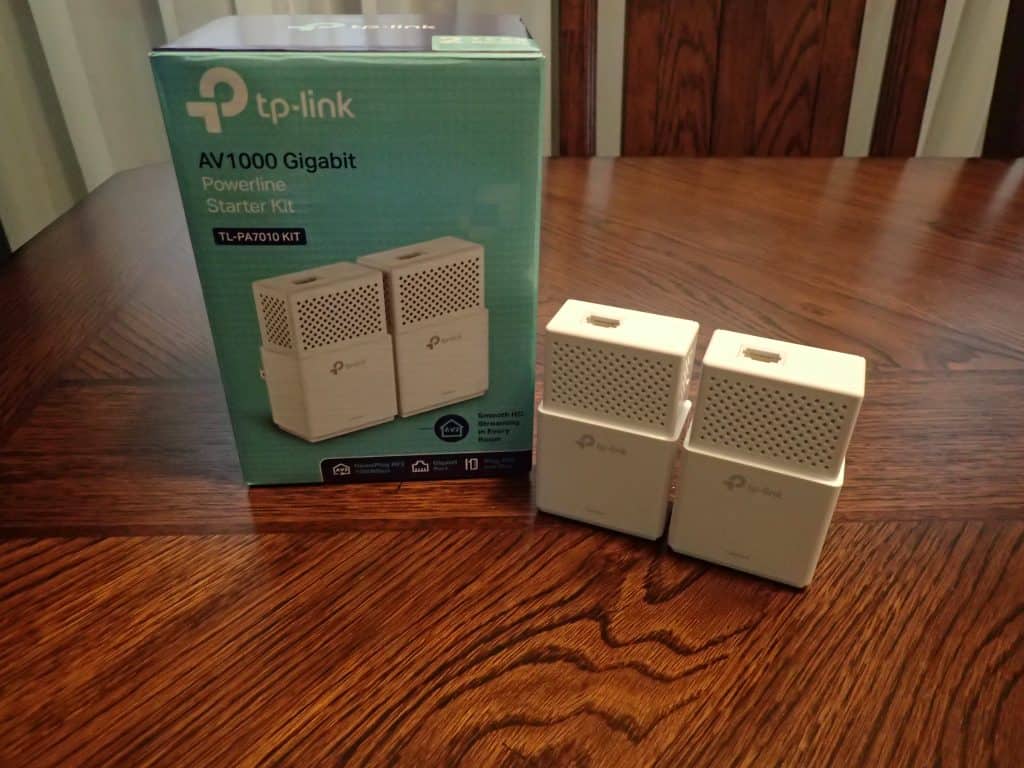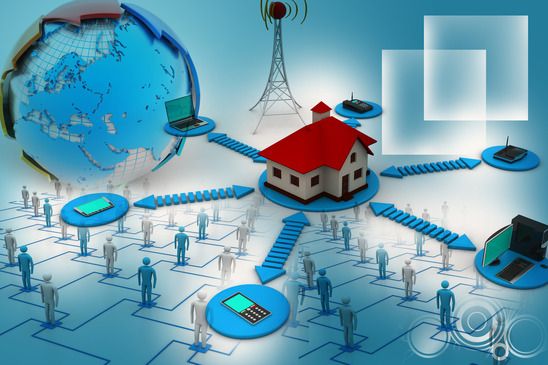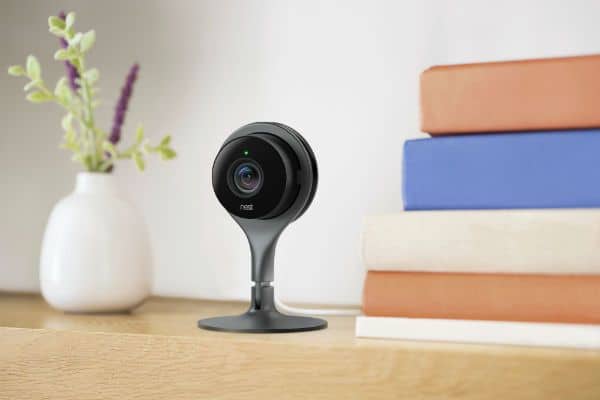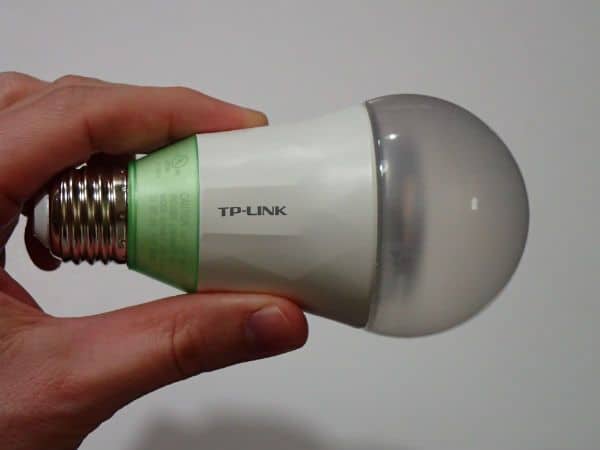In order to create an awesome smart home that is reliable and easy to use, you have to have a robust home network. If your WiFi router is leaving you with spotty, unreliable coverage, a powerline adapter may be able provide the extra coverage you need.
Ideally, a home would have ethernet cable drops in every room. However, that’s not the case for most people. What we do have in every room is electrical outlets. A powerline adapter let’s you use your home’s electrical wires to transfer network data.
4 Occasions to use a Powerline Adapter
There are a number of options to choose from when you need to expand your home network’s coverage. There are a few specific cases when a powerline adapter is a great choice.
1. Detached Garage
If you have a detached garage that is too far from your home’s router to get a reliable signal, a powerline adapter can solve the problem.
My home’s WiFi signal does reach my garage. In fact, my Chamberlain hub was connected for many months without any problems. However, I found that my phone’s WiFi connection was spotty while I was in the garage.
Therefore, I installed a TP-Link powerline adapter to extend my home’s internet to my garage. I plugged an old Linksys router into the adapter and now I have perfect WiFi in the garage. The bandwidth is significantly less than the maximum (see table below), but it’s still plenty to stream video.
2. Thick Walls
Thick walls can be a barrier for WiFi. However, powerline adapters should have no problem traveling through walls as long as there’s an electrical wire that passes through it.
3. Dead Spots
If you have a “dead spot”, it may be caused by interference from certain electronic devices. Adding a WiFi repeater in the area may improve the signal, or it may not. A powerline adapter will be able to bypass the interference and provide a stable connection.
4. Crowded WiFi (apartment)
If you live in an apartment or other area where the WiFi frequency band is really crowded, you may experience frequent connectivity problems, especially with high-bandwidth devices. This is potentially a great application for a powerline adapter.
Will powerline adapters work anywhere in my home?
In most cases, yes.
A common misconception with powerline adapters is that traveling through circuit breakers will have a negative impact on the signal. In fact, the signal can travel through multiple breakers and even between homes with minimal impact.
Instead, the main cause of signal degradation will be electrical interference and to a lesser extent distance between the adapters.
TP-Link lists the range of their powerline adapter as up to 300m of wire between the adapters. Although I haven’t tested it, I suspect this optimal range is only possible with a single length of wire with minimal appliances to cause interference.
Of course in a typical home, there are many appliances that can cause interference which will degrade the signal.
Is powerline as fast as ethernet?

No.
The theoretical maximum for powerline is at least comparable to ethernet.
However, in real world use, your powerline adapters will not be able to get close to their theoretical maximum (see my case study below).
Ethernet does not suffer from the same degradation over long distances because it is not nearly as prone to electrical interference.
Should I use encryption for my powerline network?
Yes. It’s a good idea to use encryption.
In many places, a single transformer feeds electricity to multiple houses. It is possible for powerline devices to work between all homes that are fed by the same transformer.
Therefore, if you setup a powerline adapter without encryption, it could be possible for a neighbor to plug in a compatible powerline adapter in their home, and tap into your powerline network.
So how do you set up encryption on your powerline network? Don’t worry, it’s super easy and it literally only takes a couple seconds.
HOW TO: With both adapters plugged in, simply press the pair button on the first adapter. Then, within 2 minutes, press the same button on the second adapter. That’s it.
Do all my powerline adapters need to be the same brand?
No.
However, you should make sure that they all use the same standard. The latest standard is called Homeplug AV2. This is the standard that most new powerline adapters will use. It’s way faster than previous versions.
I used the TP-Link AV1000 powerline kit. It was super-easy to setup and use. Without any previous experience with powerline or even reading the instructions, I had it up and working in under 5 minutes. It really is plug and play.
I don’t think there’s anything special about the TP-Link brand. My guess is you’d be fine buying any brand as long as it meets your bandwidth requirements and uses the Homeplug AV2 standard.
Here’s a few more powerline options available on Amazon:
Do all powerline connections need to be in pairs? Or can I add a third?

They don’t need to be pairs. Once you have a pair of powerline adapters setup, you can add 1 or more adapters to the same network.
The maximum number of adapters you can add to a single network depends on the device firmware. The typical maximum for a Homeplug AV2 device is 16-64.
However, it’s unlikely you would ever want to connect much more than 16. All the adapters must share the same bandwidth, so too many devices could cause the network performance to suffer.
The problem with powerline adapters
I found the performance to be consistent but unpredictable. I know that sounds like a contradictory statement, but here’s what I mean:
For each location, the performance was consistent. I did multiple tests for each location and consistently registered the same speed.
But, without plugging in the powerline adapter and testing the performance, I couldn’t accurately predict how well it would perform.
Of course, if you’re deciding whether or not to buy a powerline adapter, you would like to hear either “yes it will work” or “no it won’t”. Unfortunately, it appears the only way to know for sure whether it will work or not is to buy it and try it out.
Case study: How well do powerline adapters work in my home?
My home’s electricity comes into the basement to a main panel. From there, there are three more sub-panels. The main floor and basement are serviced by the main panel. One sub-panel services the second floor. The second sub-panel services the 3rd floor attic living space. And, the last one services the garage.
I tested several different locations in my home and recorded the performance of each. For each location, I also give a brief description of the electrical path between the adapters.
I used my desktop computer which is connected directly to the router/modem via ethernet as the control for the experiment. My internet connection speed is supposed to be 100 Mbps, which I confirmed.
For reference, Netflix recommends at least 5 Mbps for streaming HD video and at least 25 Mbps for stream Ultra HD (4k) video.
| Location | Download speed (Mbps) | Connection path: |
| Desktop (control) | 104 | ethernet |
| Front door | 53 | 16′, 2nd floor panel, 20′, main panel, 45′ |
| Office (close) | 88 | 8′ of wire |
| Office (other side of room) | 75 | 24′ of wire |
| Attic | 103 | 16′, 2nd floor panel, 20′, main panel, 30′, attic panel, 45′ |
| Kitchen | 34 | 16′, 2nd floor panel, 20′, main panel, 40′ |
| Garage (by panel) | 31 | 16′, 2nd floor panel, 20′, main panel, 60′, garage panel, 2′ |
| Garage (farthest corner) | 2 | 16′, 2nd floor panel, 20′, main panel, 60′ garage panel, 85′ |
When I bought the powerline adapter, I wasn’t sure if the signal would travel through the sub-panels. However, after testing it, I found that I can plug the adapters in almost anywhere in my home and get a high-speed connection.
The only plugin I tested that didn’t give a reliable connection was in my garage. The garage’s sub-panel is located on one corner of the garage. I followed around the perimeter of the garage to find the outlet that was furthest from the sub-panel (it was about 100 feet of wiring).
Final Thoughts
For many people, a good WiFi router will be all they need to provide high-speed internet to their whole home. But, if you have some “gaps” that need to be filled, a powerline adapter can be an easy, low-cost solution.
It won’t provide blazing speeds like ethernet, but in most cases you’ll be able to get enough bandwidth to stream Ultra HD video.




